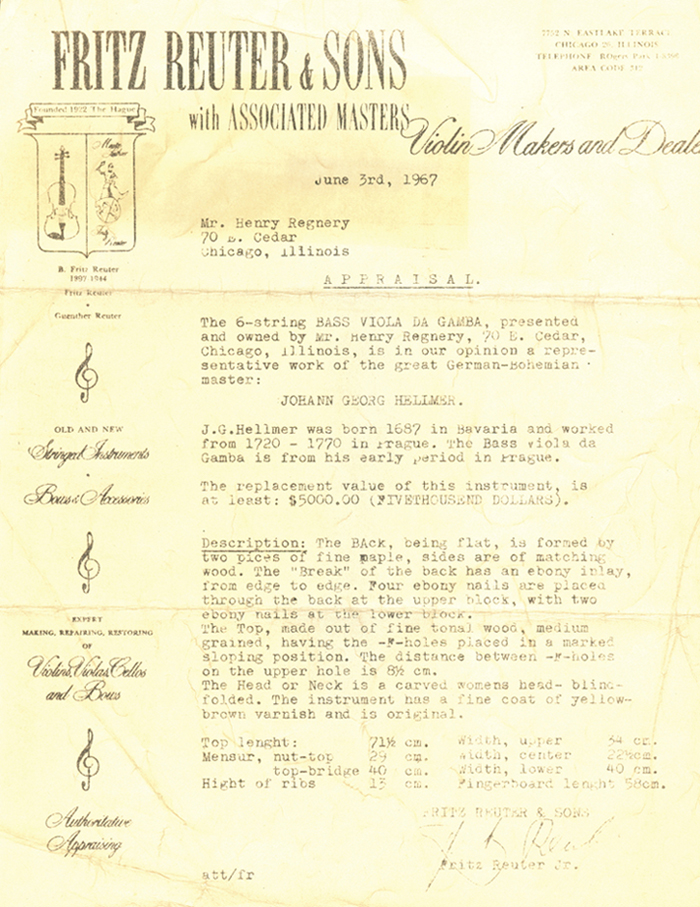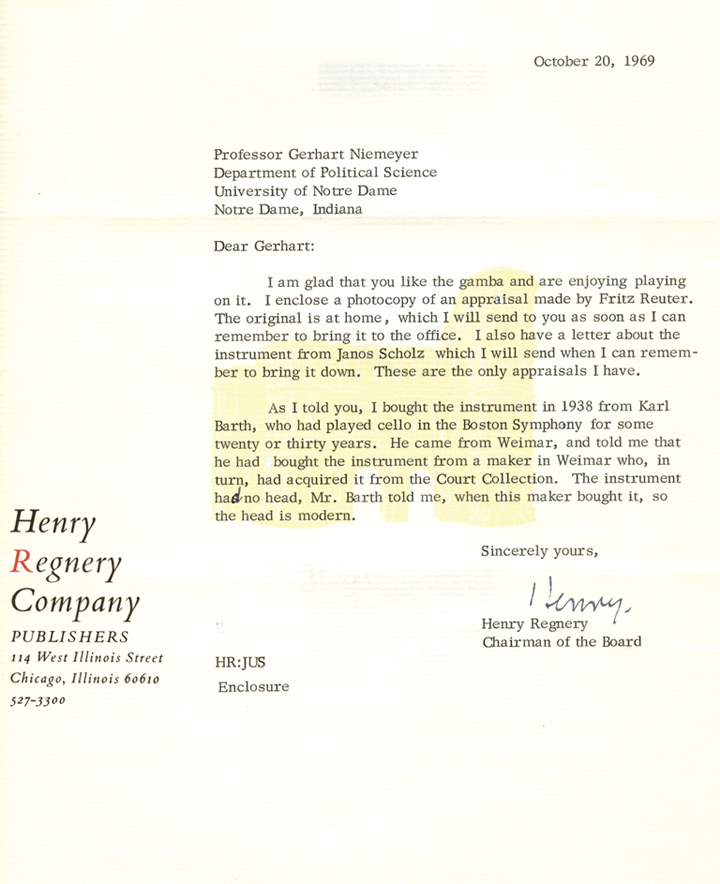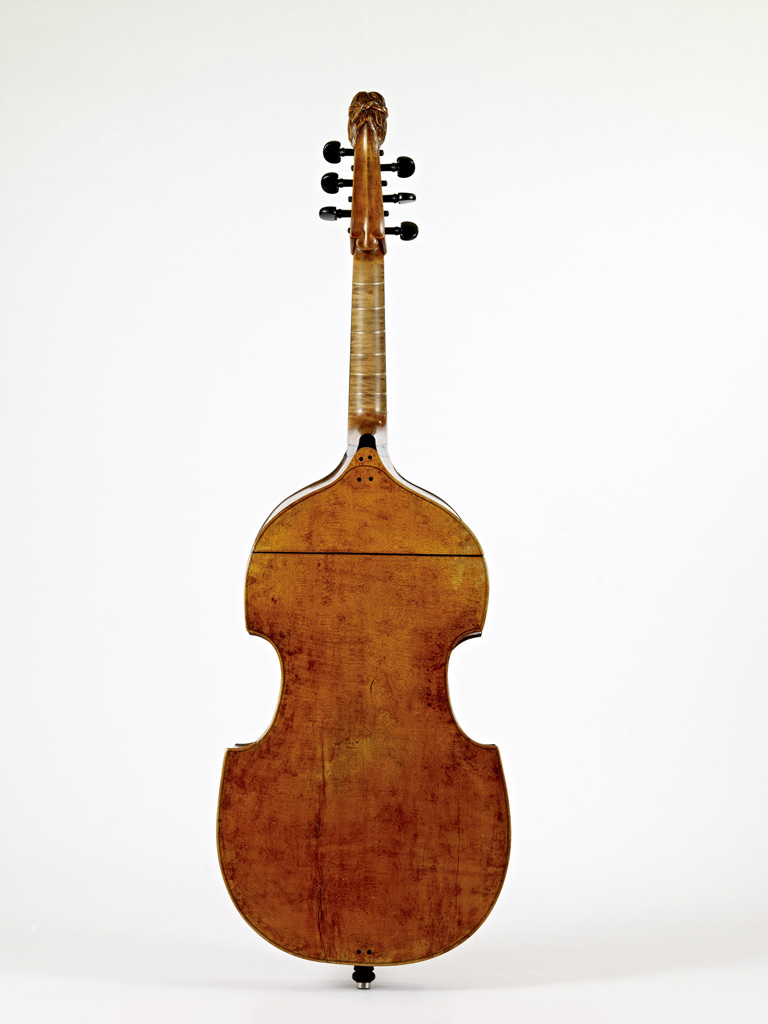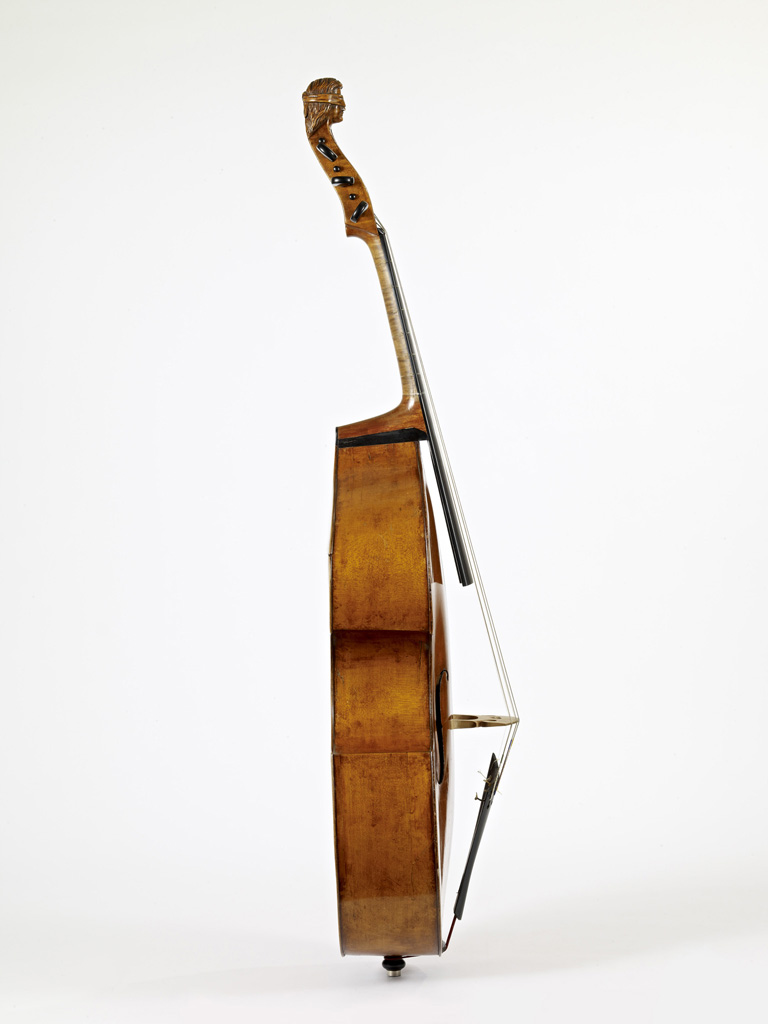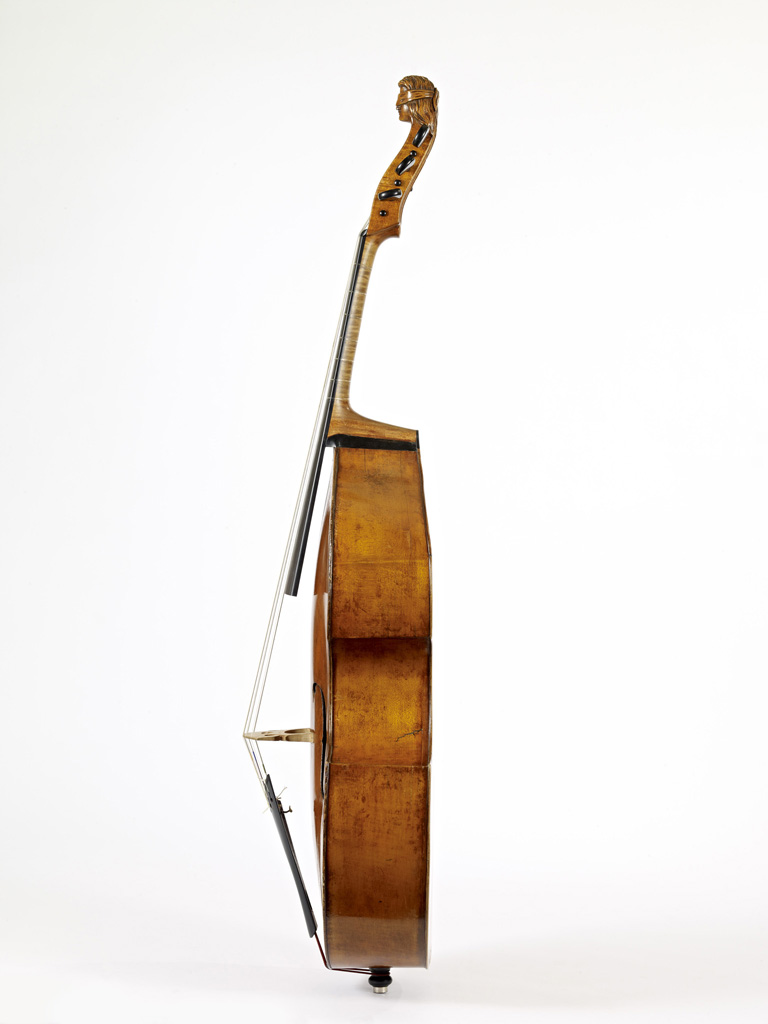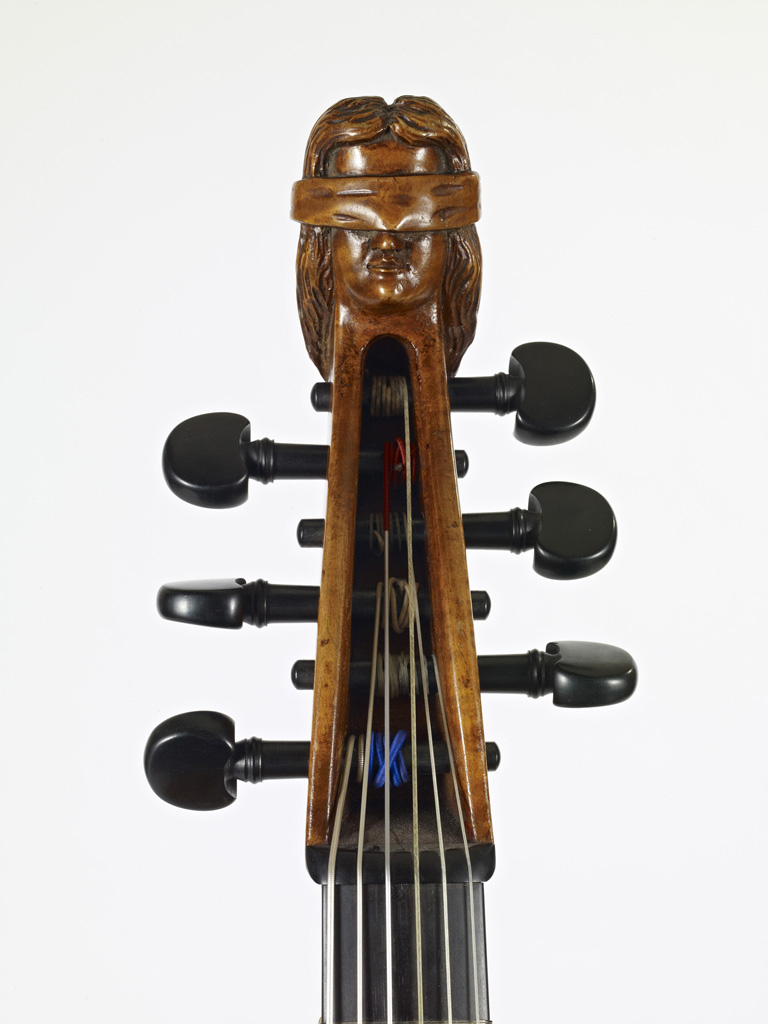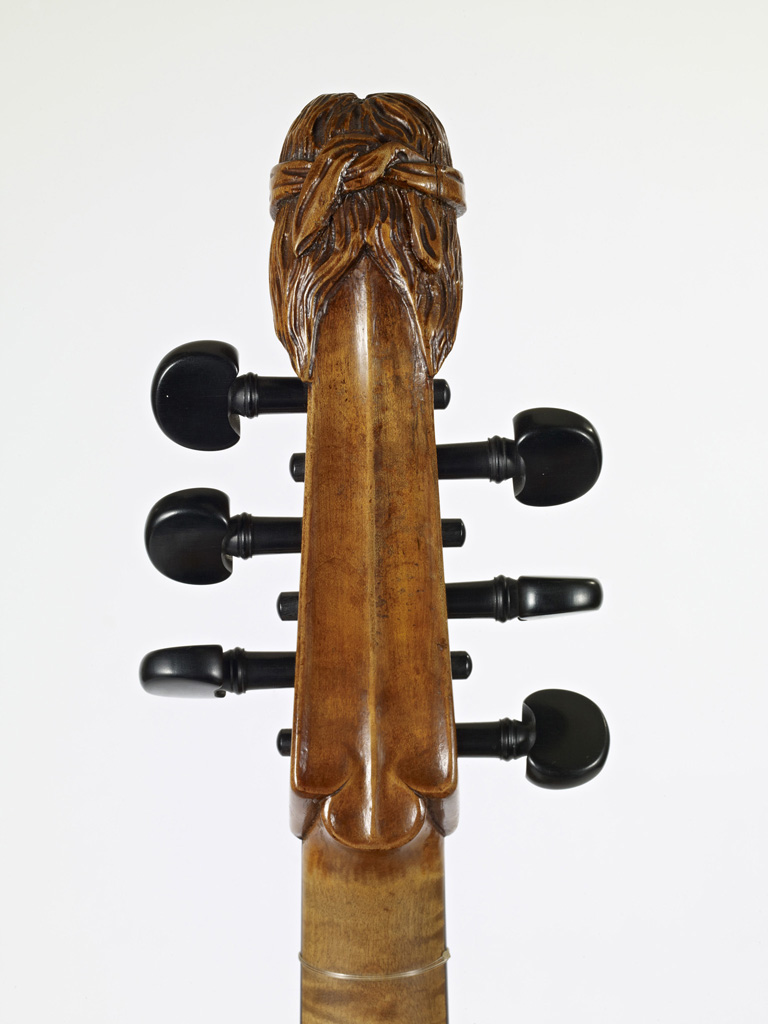The table is of two unmatched pieces, the tighter grain on the bass side having from 12 to 2 growth rings per cm, the treble side 9 to 5. The long soundholes are F shaped. The single black-white-black purfling has a wide center white strip.
The back is two pieces of lightly flamed maple with single black-white-black purfling. There are two ebony pins in the bottom block, and in the top block two each side of the purfling. There is an ebony heel cap on the neck heel, and an ebony strip across the fold.
The ribs are six pieces of plain maple with butted corners. A wide ebony strip blends the end of the top ribs into the neck heel.
The replacement neck is flamed maple, and the pegbox with a cello-style heel is surmounted by a blindfolded, long-haired head of ambiguous gender. There are six ebony pegs.
The fingerboard is solid ebony, as is the slanted tailpiece (longer on the treble side). The ebony endbutton, which is drilled for a wooden endpin, is set into an ebony panel between the bottom ribs.
The varnish is a medium golden brown.
Body length 72.0
Body width
upper bout 34.1
center bout 22.8
lower bout 38.9
String length 70.0
Rib height
top block 10.9
fold 12.6
upper corners 13.0
lower corners 13.0
bottom block 12.8
Label
Lor.° e Tom.° Carcassi
In Firenze nello Anno 1740
Alla Insegna del Giglio
[printed except 40]
Bought in June 1984 from Gerhardt Niemeyer, South Bend, Indiana


